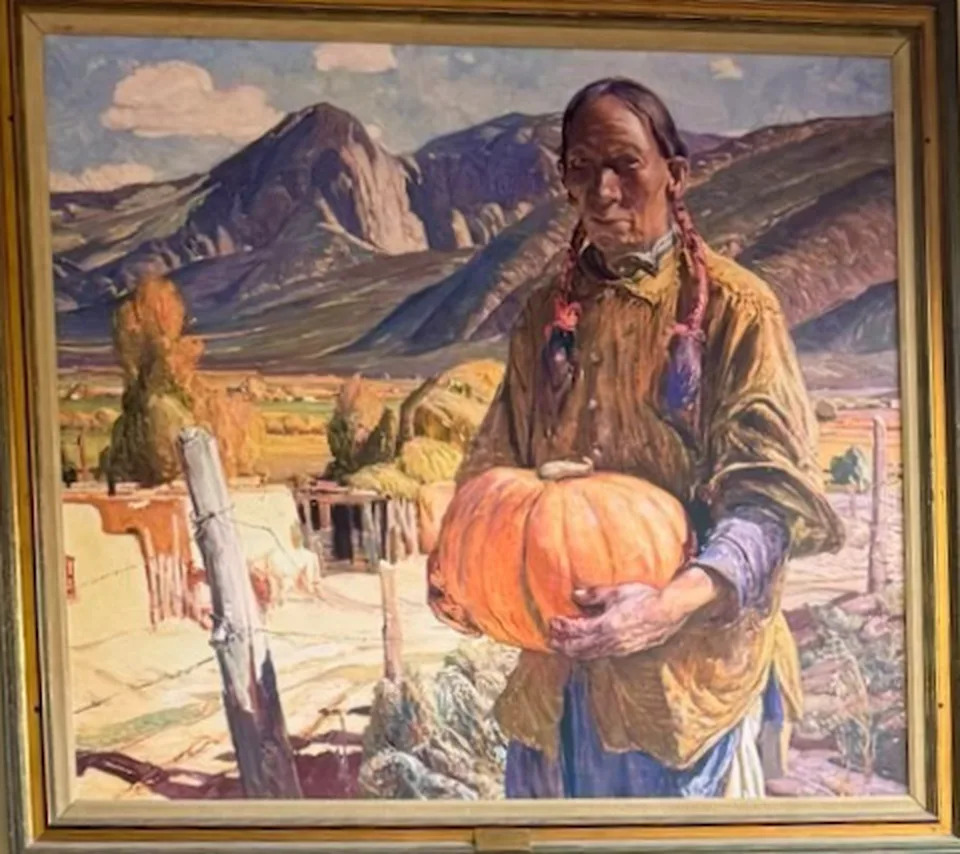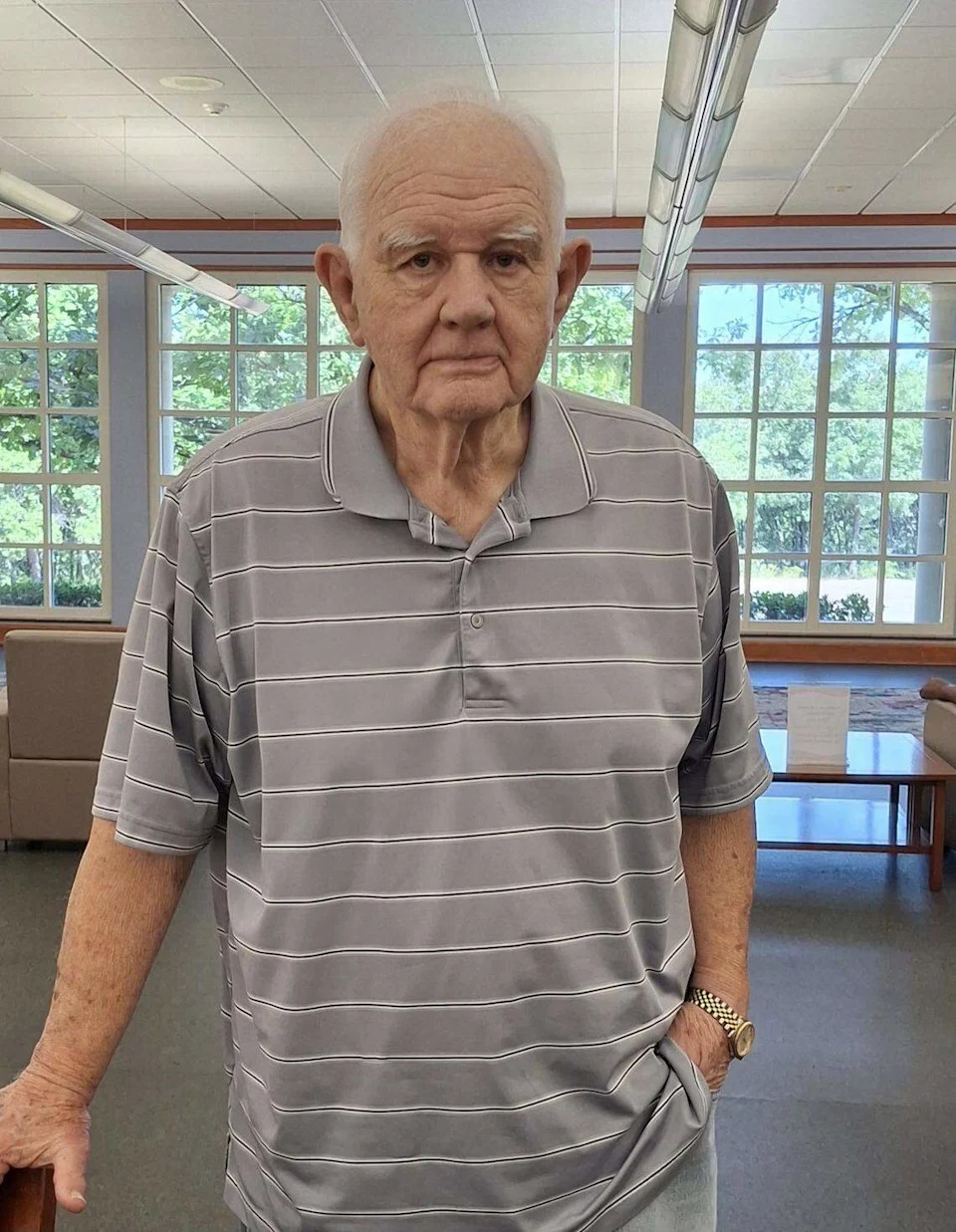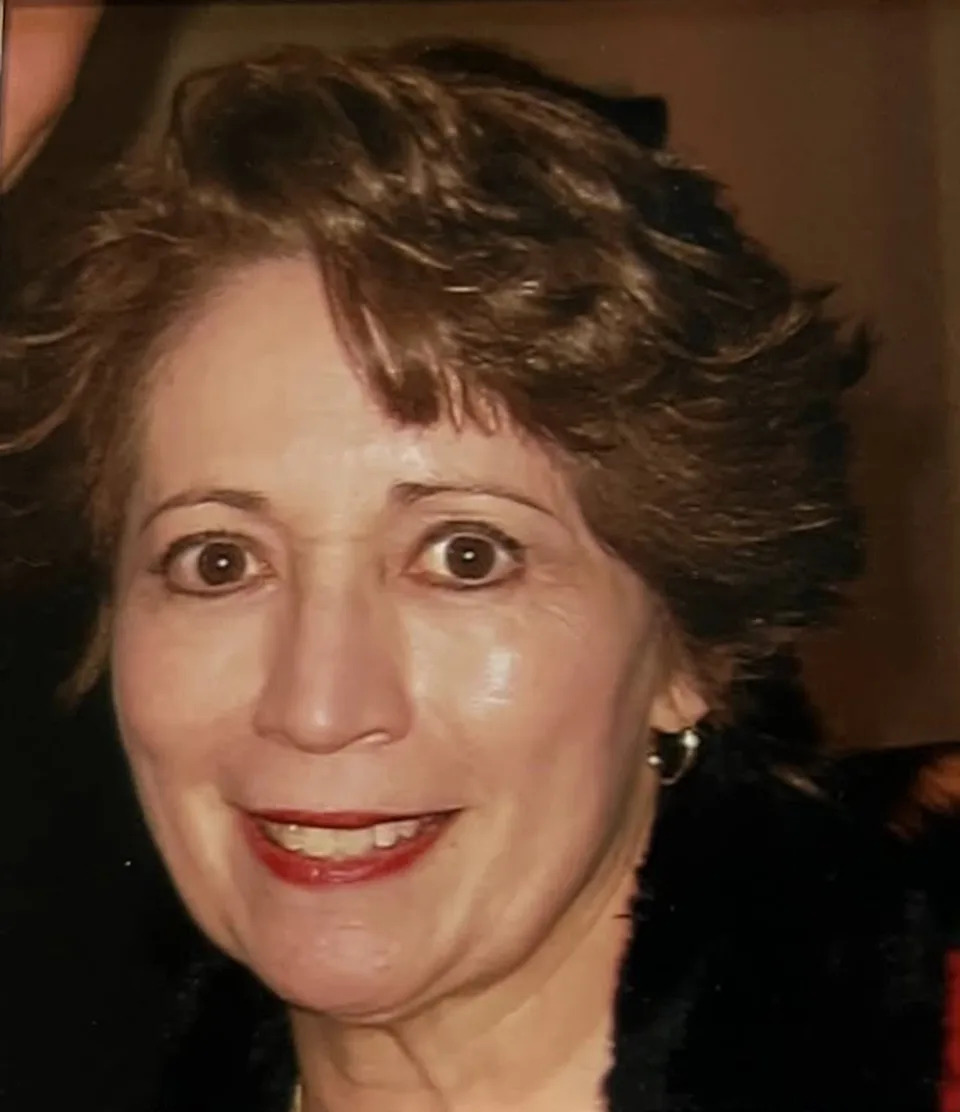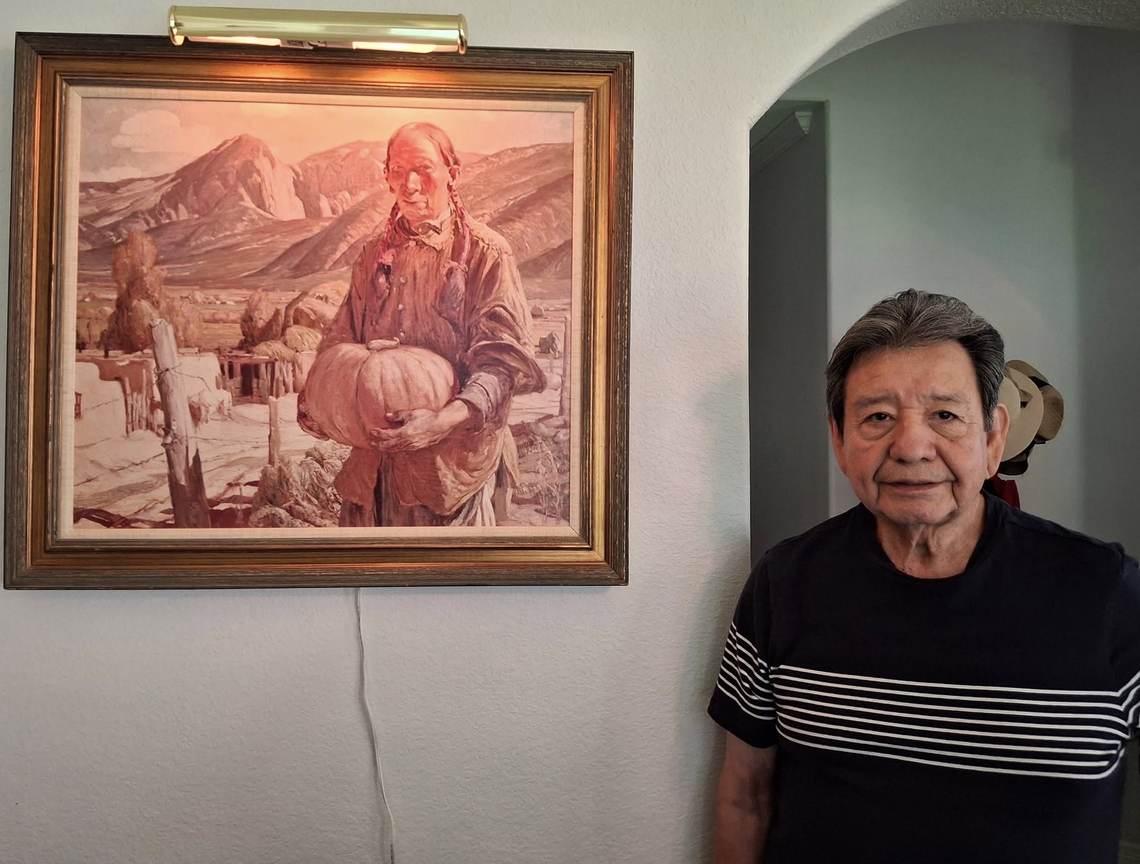Mauro Serrano, former principal of North Side High School, recalled his registrar Claudie Colley in 1981 asking if they should pay the $500 insurance on the painting by Oscar E. Berninghaus called October-Taos hanging in the library.
After Serrano asked for the value of the painting, Colley contacted Dow Art Galleries in Fort Worth for an appraisal. The following week, the Dow appraiser, descending the staircase, shouted to Serrano he would pay $150,000 for the art.
Serrano informed Eugene Gutierrez, the assistant superintendent for finances, that he wished to sell the painting and use the proceeds for graduating seniors’ scholarships. Gutierrez arranged for the Amon Carter Museum of American Art to organize an auction sale.
The painting sold for $151,500 and funded the Perpetual North Side High School Scholarship starting in 1982. In 2021, a retired Serrano; former history teacher and coach Dan Lamb, who taught at North Side for 46 years; and school counselor Leola Curtis, attended a gathering of retired North Side High teachers at Blue Mesa restaurant. After the group questioned the status of the painting and scholarship fund, the trio decided to investigate.
Lamb placed the painting in historical context by explaining President Franklin D. Roosevelt implemented the Works Progress Administration (WPA) in 1935 to help the country recover from the Great Depression through his New Deal program. The WPA created public works, such as building schools, roads, and bridges, to stimulate the economy. North Side High School’s Neo-Deco school building was built in 1937 through the WPA program, along with several other Fort Worth schools. Designed by Fort Worth architect Wiley G. Clarkson, the school construction employed local workers, installing wainscot ceramic tile and terrazzo flooring. Perched on a hill, North Side High School at the time was one of the most beautiful public buildings in Fort Worth.

A print of the October-Taos painting by Oscar E. Berninghaus hangs in Mauro Serrano’s home.
WPA also employed artists such as Berninghaus, who specialized in New Mexican scenery populated with Native Americans. He and other artists of the Taos School established an artist colony in New Mexico that illustrated the natural beauty and rustic life of the native and non-native people in the 1920s and 1930s. Gordon E. Sanders wrote about Berninghaus’ artistry: “It was the rituals and beautiful colors of autumn that inspired Berninghaus to paint October, truly a tribute to Indian Thanksgiving.” To promote and sell the paintings, WPA traveled the country with the artists’ works on trains, stopping in cities.
The Stockyards meat industry weathered the Depression better than others. When the train stopped in Fort Worth, cattlemen purchased the paintings and either kept them or gave them away to schools. North Side High School principal O. D. Wyatt received the October-Taos painting for installation in the newly-built school. To preserve its beauty, he hung it high in the 20-foot ceiling library. However, librarian Emily Bingham said students threw spitballs at the painting.
Over the years, as Berninghaus’ artistic reputation soared, so did the value of his oeuvre. Curtis had learned the October-Taos painting had been sold through a New York auction to the Gerald P. Peters Gallery in Santa Fe. While visiting family and the gallery in New Mexico, she found it on the floor, leaning against the wall along with other works. But the painting was later sold again.
Lamb, on vacation in Hot Springs Village, Arkansas, relaxed on the porch of a cabin and talked with a neighbor who sat on the next-door porch. Lamb learned he was an art dealer, told him the story about the October-Taos, and asked if he might know its location. The art dealer said a Taos art dealer relayed the Berninghaus painting had been sold to an anonymous art collector from the Northwest United States. Some valuable painting owners preferred discreet sales to avoid robbery. Lamb speculated the secret buyer was Bill Gates.

Former North Side High School history teacher and football coach Dan Lamb.
Status of North Side High School scholarship fund
In their quest to know the scholarship status, the trio visited Carmen Arrieta-Calendaria, chief financial officer. She welcomed their assistance in providing historical details about the fund. Her office knew little more than it was labeled the North Side High School scholarship. She explained the fund’s interest had been deposited with other schools’ scholarship money. She agreed to set up a separate fund, assist with finding a better interest-bearing account, and advised them to invest a percentage of the interest to the principal.
The CFO told them as of Feb. 20, 2024, the fund total was $301,500. Oilman and North Side High alum Charles Wollner had donated $50,000 toward the scholarship in his will. According to Gloria Menchaca, a North Side High alum and assistant principal at the school, the school awarded three $4,500 scholarships to graduating seniors in 2024.
Once the original painting left the school, the students never saw it again. Curtis assisted the 1984 graduating class to pay the Carter Museum to replace the original with a print. In addition, she asked for three additional prints that Serrano, Curtis, and Colley purchased.

Former North Side High School counselor Leola Curtis.
Over his 37-year teaching and administrator career, mostly in Fort Worth schools, Serrano relished his 13 years at North Side High School as Camelot days. He expressed good fortune to work with dedicated staff like Lamb, Curtis, and Colley who worked well as educators and art sleuths. Despite the unknown whereabouts of the October-Taos, North Side High students found heartful teachers and staff.
Author Richard J. Gonzales writes and speaks about Fort Worth, national and international Latino history.

